Welcome to Building Healthy Homes!
As designers, we recognize the responsibility we have to ensure that the places we create are actively shaping our communities towards a healthier and more equitable future.
It is no small feat, but one we can accomplish together — beginning with affordable homes.
Housing is one of the most influential spaces when it comes to human and environmental health. “Home” anchors our life and housing has the power to influence our social and physical health alike. So shouldn’t our projects reflect this?
Imagine! Millions of affordable homes that actively contribute to the resilience of both their residents and environments.
While lofty, this goal is not as out of reach as it may seem. There are practices across the design-build industry who are not only advocating but implementing systemic changes through healthier design decisions in their projects.
Here, we celebrate the work that is being done towards making this crucial goal a reality. In an effort to support a more transparent and collaborative design-culture, we are continuously mapping every affordable housing development across the USA that has implemented a healthy material choice.
Want to add your project to the map? Submit your project here!
What do we mean by a healthy affordable home? Read about it here.
We’re looking to showcase all kinds of projects, including experimental or prototypical spaces! If that sounds like you, hit the link above to share your work.
Check out these incredible projects and explore the map below to see what you can do in your next project!
Click on a project to learn more!
Explore all the projects in detail on our project dashboard
Check out these trends we found in the projects to find what you can do to make your next project healthier!
INDEX:
Paint: Includes any healthier paint product including biobased and low-to-no VOCs
Finishes: Includes any healthier stain or sealant including low-to-no VOC, and PFA and PVC free
Hemp: Includes all products that include hemp
HempLime: Refers specifically to hempcrete products using limestone as the binder
Insulation: High performing, renewable and/or recyclable material, and low-to-no toxic chemicals
Wood: Includes adhesive free, naturally bound, and hardwood products
Plywood: Bound with biobased or formaldehyde free products
Tile: Includes biobased and/or nature stone composite tiles
Clay: Includes clay flooring, plaster, and finishes
Natural Stone/Ceramics: Includes natural stone and clay-based dimensional surfaces
PFAS: Per-and polyfluoroalkyl substances (also known as perfluorinated chemicals PFCs) are a group of man-made chemicals widely used to make products more resistant to stains, grease and water. Studies have linked these chemicals to adverse health effects including increased cholesterol levels, low infant birth rates, immunological problems, cancer, and thyroid hormone disruption.
PVC: Polyvinyl Chloride is a Persistent Organic Pollutant Source Material. Its chloride monomer is a recognized human carcinogen. It often contains other Red List ingredients (i.e. cadmium, lead, phthalates. The production of PVC creates dioxins, specifically TCDD, which accumulate in human animal tissues. It has been linked to immune and nervous system damage, and harming the endocrine and reproductive cycles.
VOCs: Volatile Organic Compounds include a wide-range of organic chemicals that can evaporate into both interior/exterior air can cause environmental impacts such as photochemical smog. They can cause an array of health effects from respiratory irritation to human carcinogens. It is often found in on-site wet-applied products such as paints, adhesives, and sealants.
Need help getting started on your next healthy project?
Below are popular choices found in the mapped projects and case studies.
You can also explore materials you can use in our material collections and check out the learning hub to explore courses, guides, and events!
Building Healthy Homes: An Open Database
12 products
About Our Collections
The goal of our collections is to help promote transparency in the material ingredients of building products by fostering knowledge and awareness of products and materials for which life-cycle information is available, and that have environmentally, economically, and socially preferable life-cycle impacts.
Keep an eye out for the following symbols:
A Healthier Affordable Building Product
Products with the designation of "Healthier & Affordable" were specified and installed in at least one of our Case Studies of healthier affordable housing.
Available at the Donghia healthier Materials Library
The Donghia healthier Materials Library library is open to Parsons student and faculty. Learn more about access and opening hours here.
Low Embodied Carbon
“Embodied Carbon” is the total amount of carbon emitted during the process of making a material. *HML refers to a manufacturer's EPD to determine whether a product's A1-A3 carbon emissions falls within HML's threshold for Low Embodied Carbon.
New Product
This product has been added to the collection within the past six months.
Product in Development
Products with this designation identify they are currently scaling or only available in markets outside of the building industry. they could be experimental or in use in capsule collections.
Available in the EU
Products with this designation are currently available only in the European Union and identified as being an exemplary healthy option in the respective product group.
Ingredient Disclosures
There are several ways of evaluating a material’s health that we include with product information. Disclosures are reports by manufacturers about product ingredients, impacts, or other attributes.
Key Disclosures include:
Health Product Declaration (HPD)
A voluntary technical specification for reporting information on product contents and associated health information, intended to be the health-analogue to Environmental Product Declarations (EPDs).
Declare Label
Declare is a transparency platform and product database that answers three questions:
1. Where does a product come from?
2. What is it made of?
3. Where does it go at the end of its life?
Environmental Product Declaration (EPD)
A standardized format for communicating the environmental effects associated with a product’s raw materials extraction, energy use, chemical makeup, waste generation, and emissions to air, soil, and water.
Safety Data Sheet (SDS)
A reporting format that provides basic information about a material’s chemical ingredients, the potential safety hazards to installers, and recommended practices for installation.
USDA Certified Biobased Product Label
Managed by the U.S. Department of Agriculture (USDA), the goal of the BioPreferred Program is to increase the purchase and use of biobased products.
Other
| Category | Sub-category | Manufacturer | Product | Ingredient Disclosures | |
|---|---|---|---|---|---|
| Dimensional Surface | Plywood | Columbia Forest Products | PureBond Hardwood Plywood | HPD Declare EPD SDS |
PureBond Hardwood PlywoodUsed in Healthier Affordable HousingAvailable At the Donghia Materials LibraryColumbia Forest Product's PureBond hardwood plywood is formaldehyde-free, and is instead made with a soy-based binder. This North American-made product is also cost-competitive with standard plywood products, making it a fantastic healthier alternative. It contains 95% Biobased Content and has been awarded the USDA Certified Biobased Product Label in the BioPreferred® Program. CategoryDimensional Surface, PlywoodManufacturerColumbia Forest Products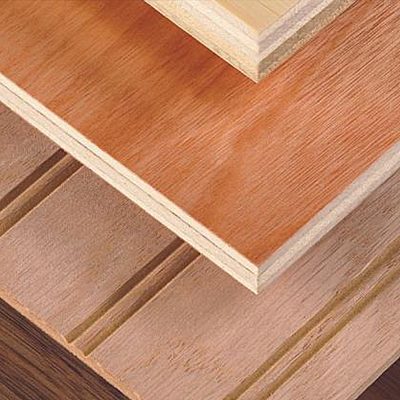
Material composition*Wood Dust 95.65%, Other components below the reportable levels, (the specific chemical identity and/or percentage of composition has been held withheld as a trade secret) <1% *as reported by the manufacturer AVAILABLE SIZING2’x 4’, 2’x 8’, 4’x 8’, 4’x 10’ Panels - available in standard thickness COLORSVariety of wood species CERTIFICATIONS & DISCLOSURES
Health Product Declaration (HPD)
Declare Label
Environmental Product Declaration (EPD)
Safety Data Sheet (SDS)
USDA Certified Biobased Product Label
Other
FSC Certification
Rainforest Alliance Certification
Contributes to LEED credits
USDA Certified Biobased Product Label
Additional DocumentsLast UpdatedDecember 16, 2025 |
| Dimensional Surface | Plywood | Columbia Forest Products | PureBond Classic Core® Plywood | HPD Declare EPD SDS |
PureBond Classic Core® PlywoodUsed in Healthier Affordable HousingAvailable At the Donghia Materials LibraryClassic Core® is a combination core panel construction where cross bands of thin MDF are utilized in place of veneer cross bands. Classic Core® can be manufactured with bonded crossbands which do not contain added formaldehyde. PureBond Classic Core® may contribute to LEED® 2009 credit IEQ 4.4 and conforms to CARB II exempt emission requirements called for in LEED V4. It contains 95% Biobased Content and has been awarded the USDA Certified Biobased Product Label in the BioPreferred® Program. CategoryDimensional Surface, PlywoodManufacturerColumbia Forest ProductsMaterial composition*Veneer: Wood; Decorative veneer: Wood; adhesive: Polyvinyl Acetate; Water; Defatted Soy Flour; Magnesium oxide (MgO); Hexanedioic acid, polymer with N-(2-aminoethyl)-1,2-ethanediamine and (chloromethyl)oxirane; Monopotassium Phosphate; Glycerin; Corn Starch; Borax; Calcium hydroxide (Ca(OH)2) *as reported by the manufacturer AVAILABLE SIZING4’x 8’, 4’x 10’ Panels - 1/2”, 5/8”, 3/4”, 1” and 1-1/4” thickness COLORSVariety of wood species CERTIFICATIONS & DISCLOSURES
Health Product Declaration (HPD)
Declare Label
Environmental Product Declaration (EPD)
Safety Data Sheet (SDS)
USDA Certified Biobased Product Label
Other
FSC Certification
Rainforest Alliance Certification
Contributes to LEED credits
USDA Certified Biobased Product Label
Additional DocumentsLast UpdatedDecember 16, 2025 |
| Dimensional Surface | Solid Stone | Coldspring | Granite Countertop | HPD Declare EPD SDS |
Granite CountertopUsed in Healthier Affordable HousingAvailable At the Donghia Materials LibraryColdspring Granite Countertops are made from 100% natural granite. Stone is one of the most durable materials that you can use for any application - when specified and detailed correctly, these countertops can last for hundreds of years. Their long life results in granite countertops’ very low embodied energy levels. Coldspring is also committed to sustainable manufacturing practices that maximize the utilization of resources while minimizing energy use. CategoryDimensional Surface, Solid StoneManufacturerColdspring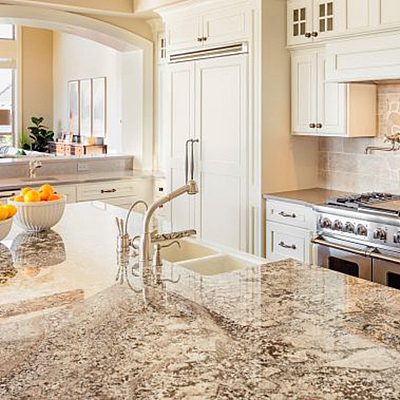
Material composition*Granite 100% *as reported by the manufacturer AVAILABLE SIZINGCustom Sizes - available in 3/4” thickness COLORSAvailable in a variety of granite types CERTIFICATIONS & DISCLOSURES
Health Product Declaration (HPD)
Declare Label
Environmental Product Declaration (EPD)
Safety Data Sheet (SDS)
USDA Certified Biobased Product Label
Other
Declare | Red List Free
NSF/ANSI 51 Certification
Contributes to LEED credits
Additional DocumentsLast UpdatedDecember 16, 2025 |
| Paint / Biobased | Linseed Oil | Ottosson | Linseed Oil Paint | HPD Declare EPD SDS |
Linseed Oil PaintAvailable At the Donghia Materials LibraryLinseed oil paint offers a healthy, durable alternative to acrylic products. Ottosson’s product is manufactured at their facility in Genarp, Sweden, which was established in the late 1980s. The technique used in making their paints, however, dates back to the 16th century. Cold-pressed raw linseed oil and natural pigments are ground in a triple-cylinder mixer, incorporating the pigments evenly into the linseed oil. The result is a linseed oil paint that creates a breathable, easy to maintain surface that doesn’t peel or bubble up. *NOTE: Ottosson Linseed Oil Paints contain zinc oxide, a natural fungicide. It adds hardness to the paint finish and is a necessary additive in several North American climates. Zinc requires a warning label due to potential aquatic toxicity under Swedish law. When disposed of responsibly and used as directed, it poses no threat to the health of humans or the environment (as reported by Earth and Flax https://www.earthandflax.com/) CategoryPaint / Biobased, Linseed OilManufacturerOttosson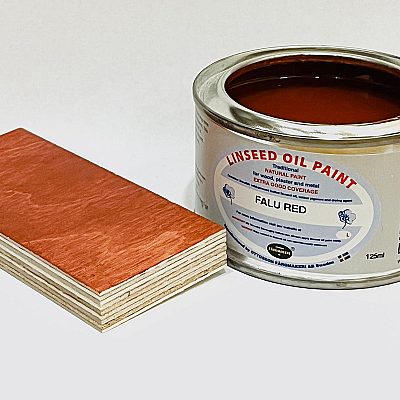
Material composition*Boiled Linseed Oil 25-50%, Pigment 1-50%, Zinc Oxide 2.5-25%, Zirconium, dipropylene glycol iso-Bu alc. neodecanoate propionate cobalt complexes <0.01% *as reported by the manufacturer AVAILABLE SIZINGAvailable in 4 ounce, 1 Liter, and 3 Liter buckets COLORSAvailable in a wide range of colors CERTIFICATIONS & DISCLOSURES
Health Product Declaration (HPD)
Declare Label
Environmental Product Declaration (EPD)
Safety Data Sheet (SDS)
USDA Certified Biobased Product Label
Other
Last UpdatedDecember 16, 2025 |
| Sealer / Surface | Oil_Linseed | Rubio Monocoat | Oil Plus 2C | HPD Declare EPD SDS |
Oil Plus 2CAvailable At the Donghia Materials LibraryRubio Monocoat's Oil Finish is a healthy option for wood finishing. A single layer of this product will protect wood from water, heat, and daily wear and tear trough molecular binding with the wood fiber. It is great for use on hardwood flooring, wood furniture or any other wood product. This product creates a finish that is easy to maintain, and it is free of VOCs and solvents. *Note: This product is sold in two components. Component A is the oil finish and Component B is an accelerator, which speeds the drying process. Although it helps with convenience, we recommend the product to be used without the accelerator as it contains isocyanates, listed as asthmagens and potential carcinogens by OSHA CategorySealer / Surface, Oil_LinseedManufacturerRubio Monocoat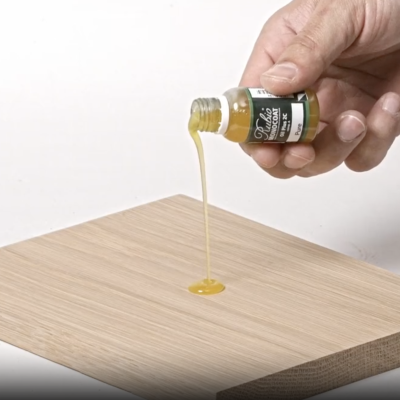
Material composition*Linseed Oil, Carnauba Wax, Beeswax, Plant Based Pigments *as reported by the manufacturer AVAILABLE SIZINGAvailable in 130 mL, 390mL, 1.3 L, and 3.5 L sizes COLORSAvailable in 40 colors CERTIFICATIONS & DISCLOSURES
Health Product Declaration (HPD)
Declare Label
Environmental Product Declaration (EPD)
Safety Data Sheet (SDS)
USDA Certified Biobased Product Label
Other
GREENGUARD | Gold
Eurofins Gold Indoor Air Comfort
Additional DocumentsLast UpdatedMay 06, 2025 |
| Tile | Porcelain | Daltile | Keystones | HPD Declare EPD SDS |
KeystonesUsed in Healthier Affordable HousingAvailable At the Donghia Materials LibraryDaltile’s Keystones Collection is a colorbody porcelain mosaic line, suitable for indoor and outdoor use on floors, walls, as well countertops. A multitude of patterns allow for many expressive, aesthetic choices. The majority of these tiles are produced in Gettysburg, PA making this best suited for projects in the Northeastern United States. CategoryTile, PorcelainManufacturerDaltile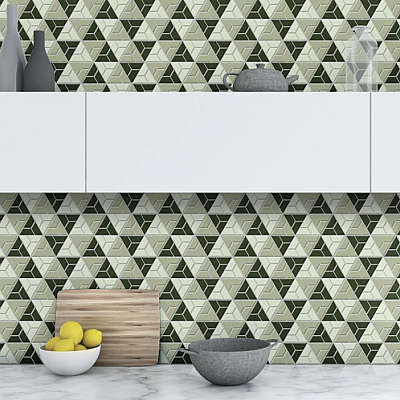
Material composition*Feldspar 40-60%, Kaolin clay 15-35%, Talc 0-6%, Nepheline Syenite 0-3%, Sand 0-2%, Zircon 0-1%, C.I. Pigment Black 27 0.5%, C.I. Pigment Blue 71 0.5%, C.I. Pigment Brown 33 0.5%, C.I. Pigment Green 26 0.5%, C.I. Pigment Red 108, C.I. Pigment Red 232 0.5%, C.I. Pigment Yellow 159 0.5%, Zinc Oxide 0.5%, Calcium Carbonate 0.2%, 1,2-Cyclohexanedicarboxylic acid, 1-butyl 2-ester 0.01-0.03% *as reported by the manufacturer AVAILABLE SIZINGvarious mosaic patterns and sizes CERTIFICATIONS & DISCLOSURES
Health Product Declaration (HPD)
Declare Label
Environmental Product Declaration (EPD)
Safety Data Sheet (SDS)
USDA Certified Biobased Product Label
Other
Last UpdatedJanuary 31, 2025 |
| Paint / Mineral | Lime | LimeWorks.us | Ecologic Trademark LimeWash Platinum | HPD Declare EPD SDS |
Ecologic Trademark LimeWash PlatinumAvailable At the Donghia Materials LibraryEcologic™ LimeWash Platinum is a mineral coating which bonds as crystals form in the pores of the substrate. It is breathable and due to substrate and mineral joined together, water or salts cannot cause the surface to bubble or flake. LimeWorks.us are serious experts through their profound experience in masonry, historic restoration and working with Lime - Naturally Hydrated Lime (NHL). Due to substantially less energy usage during production with NHL, the release of CO2 into the atmosphere is reduced considerably. Furthermore, Natural Hydraulic Lime (NHL) reabsorbs most of the CO2 during the curing process, while cement reabsorbs none. CategoryPaint / Mineral, LimeManufacturerLimeWorks.usMaterial composition*High Calcium Hydrated Lime (>90%), Skimmed Milk Derivative (<1%), Borax (<2%), Alum (Aluminum Sulfate) (>5%), Bluing Agent(>0.005%) *as reported by the manufacturer CERTIFICATIONS & DISCLOSURES
Health Product Declaration (HPD)
Declare Label
Environmental Product Declaration (EPD)
Safety Data Sheet (SDS)
USDA Certified Biobased Product Label
Other
Last UpdatedMay 27, 2025 |
| Pourables and Aggregates | Hemp Hurd | Americhanvre | Kanabat Hemp Hurd | HPD Declare EPD SDS |
Kanabat Hemp HurdHemp hurd is the tough woody interior of the hemp plant. It is harvested by decorticating - separating - the inner hurd material from the softer, fibrous exterior of the stalk. The component silica (sand) in the plant prevents it from burning or rotting and with the immense strength of the hurd it makes Hemp Hurd a versatile building material - it is used in, e.g., insulation and wall systems. Kanabat's hemp hurd is grown in France and distributed in the US via Americhanvre. According to the manufacturer, Kanabat is certified building grade by the Construire en Chanvre. CategoryPourables and Aggregates, Hemp HurdManufacturerAmerichanvre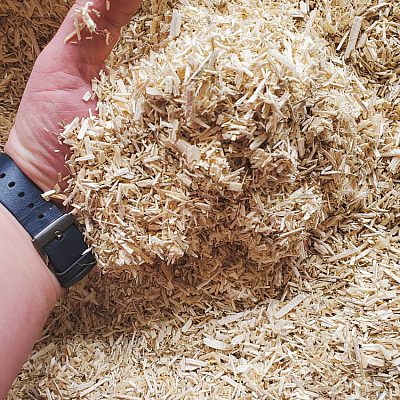
Material composition*100% pure crushed hemp hurd *as reported by the manufacturer CERTIFICATIONS & DISCLOSURES
Health Product Declaration (HPD)
Declare Label
Environmental Product Declaration (EPD)
Safety Data Sheet (SDS)
USDA Certified Biobased Product Label
Other
Last UpdatedFebruary 25, 2025 |
| Wood Flooring | Engineered Wood | HempWood | HempWood | HPD Declare EPD SDS |
HempWoodAvailable At the Donghia Materials LibraryHempWood is a hardwood alternative composed of hemp, soy flour, and binders (without isocyanates). As an engineered flooring product, the base is Columbia Forest purebond plywood. HempWood is harder than oak, and a durable wood option that promotes the carbon sequestering hemp-growing industry. All hemp for this product is grown locally in the U.S. and the entire supply chain is within a 100-mile radius of Murray, Kentucky. It contains 98% Biobased Content and has been awarded the USDA Certified Biobased Product Label in the BioPreferred® Program. Hempwood has a Janka hardness rating of 2,750. HempWood products are available either with a factory finish or unfinished. Wax or oil are suggested healthier options for unfinished floors. Check out Alternative Finishes in HML’s Healthier Design Alternatives. CategoryWood Flooring, Engineered WoodManufacturerHempWood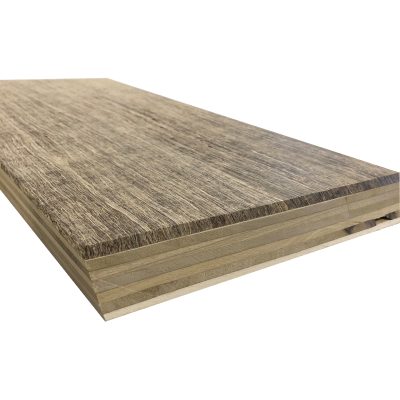
Material composition*PureBond Hardwood Plywood 50-60%, Hemp and Soy-Based Resin Adhesive 36-45%, PUR Finish (Bona Traffic HD) 1-2% *as reported by the manufacturer AVAILABLE SIZING5/8 X 5 X 48” for flooring COLORSunfinished, prefinished, bourbon CERTIFICATIONS & DISCLOSURES
Health Product Declaration (HPD)
Declare Label
Environmental Product Declaration (EPD)
Safety Data Sheet (SDS)
USDA Certified Biobased Product Label
Other
USDA Certified Biobased Product Label
Last UpdatedMay 05, 2025 |
| Resilient | Linoleum | Forbo Flooring Systems | Marmoleum Modular | HPD Declare EPD SDS |
Marmoleum ModularUsed in Healthier Affordable HousingAvailable At the Donghia Materials LibraryLow-Embodied Carbon MaterialMarmoleum Modular tiles are made from natural materials. The product has a low carbon footprint, and is free from toxic materials such as phthalates. The modular tiles allow you to mix and match to design a unique floor surface. Per Forbo's product-specific EPDs, these Marmoleum flooring system meets HML's criteria for low embodied carbon. It contains 100% Biobased Content and has been awarded the USDA Certified Biobased Product Label in the BioPreferred® Program. CategoryResilient, LinoleumManufacturerForbo Flooring Systems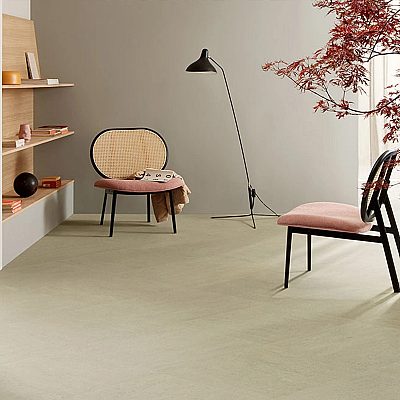
Material composition*Wood Flour 25-50%, Linseed Oil 24-45%, Reused Marmoleum 20-24%, Calcium Carbonate 13-23%, Gum Rosin 4-6%, PET backing 4%, Titanium Dioxide 2%, Pigments: 0-3% (Bayferrox red 130, Black PJ3013, Blue PS 5.1-87, Carbon Black pearls 120, Cromophtal Red K 3830 C20, IOX Yellow 02, Irgalite red K 4170 FP C20, Magnesium oxide (MgO), OMNICOLOR-orange DW23132006-PN, Red 147008-C20, Sicoplast V Blue 68-8110, Yellow 132026, Yellow PS 2.1-26, Zinc oxide), Finish 0-1% (Polyester Acrylate, Urethane Acrylate) *as reported by the manufacturer AVAILABLE SIZING9.8”x 9.8”, 9.8”x 19.69” and 19.69”x 19.69” Tiles COLORSAvailable in a variety of colors CERTIFICATIONS & DISCLOSURES
Health Product Declaration (HPD)
Declare Label
Environmental Product Declaration (EPD)
Safety Data Sheet (SDS)
USDA Certified Biobased Product Label
Other
Declare | Red List Free
Contributes to LEED credits
USDA Certified Biobased Product Label
Additional DocumentsLast UpdatedDecember 16, 2025 |
| Paint / Mineral | Lime Casein | The Real Milk Paint | Milk Paint | HPD Declare EPD SDS |
Milk PaintAvailable At the Donghia Materials LibraryMilk Paint is a powdered paint made from milk protein, lime, clay, and earth pigments such as ochre, umber, iron oxide, lampblack. Milk paint creates a matte, velvet, chalky finish that sticks to a majority of surfaces without priming or sanding. This product is made from 100% organic materials and is free of VOCs. CategoryPaint / Mineral, Lime CaseinManufacturerThe Real Milk Paint
Material composition*Casein (milk protein), Hydrated Lime, Proprietary Natural Filler, Iron Oxide Pigment (% undisclosed by manufacturer) *as reported by the manufacturer AVAILABLE SIZINGPint, quart or gallon COLORSAvailable in a variety of colors CERTIFICATIONS & DISCLOSURES
Health Product Declaration (HPD)
Declare Label
Environmental Product Declaration (EPD)
Safety Data Sheet (SDS)
USDA Certified Biobased Product Label
Other
Last UpdatedDecember 16, 2025 |
| Tile | Ceramic | Fireclay Tile | Original Ceramic Tile | HPD Declare EPD SDS |
Original Ceramic TileAvailable At the Donghia Materials LibraryFireclay's Recycled Clay Body is made from 50% recycled content, including post-consumer recycled porcelain/glass and pre-consumer recycled granite dust. The tiles are handcrafted in Aromas, California and are 100% VOC free. All of the glazes are also lead-free. Fireclay offsets their carbon footprint via Carbonfund.org.Fireclay is based in California making this product most suitable for projects in the western United States. CategoryTile, CeramicManufacturerFireclay Tile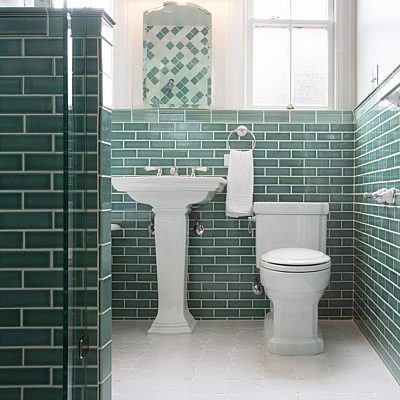
Material composition*Silica 45-55%, Aluminum Oxide 15-25%, Frits (Unleaded) 5-15% *as reported by the manufacturer AVAILABLE SIZING2"x4" up to 12"x12" tiles COLORSOver 130 colors available CERTIFICATIONS & DISCLOSURES
Health Product Declaration (HPD)
Declare Label
Environmental Product Declaration (EPD)
Safety Data Sheet (SDS)
USDA Certified Biobased Product Label
Other
Contributes to LEED credits
Last UpdatedMarch 26, 2024 |
Related Resources
Join Our Academic Network
Get Access to our carefully researched and curated academic resources, including model syllabi and webinars. An email from an academic institution or a .edu email address is required. If your academic institution does not use .edu email addresses but you would like to join the network, please contact healthymaterialslab@newschool.edu.
Already have an account? Log in